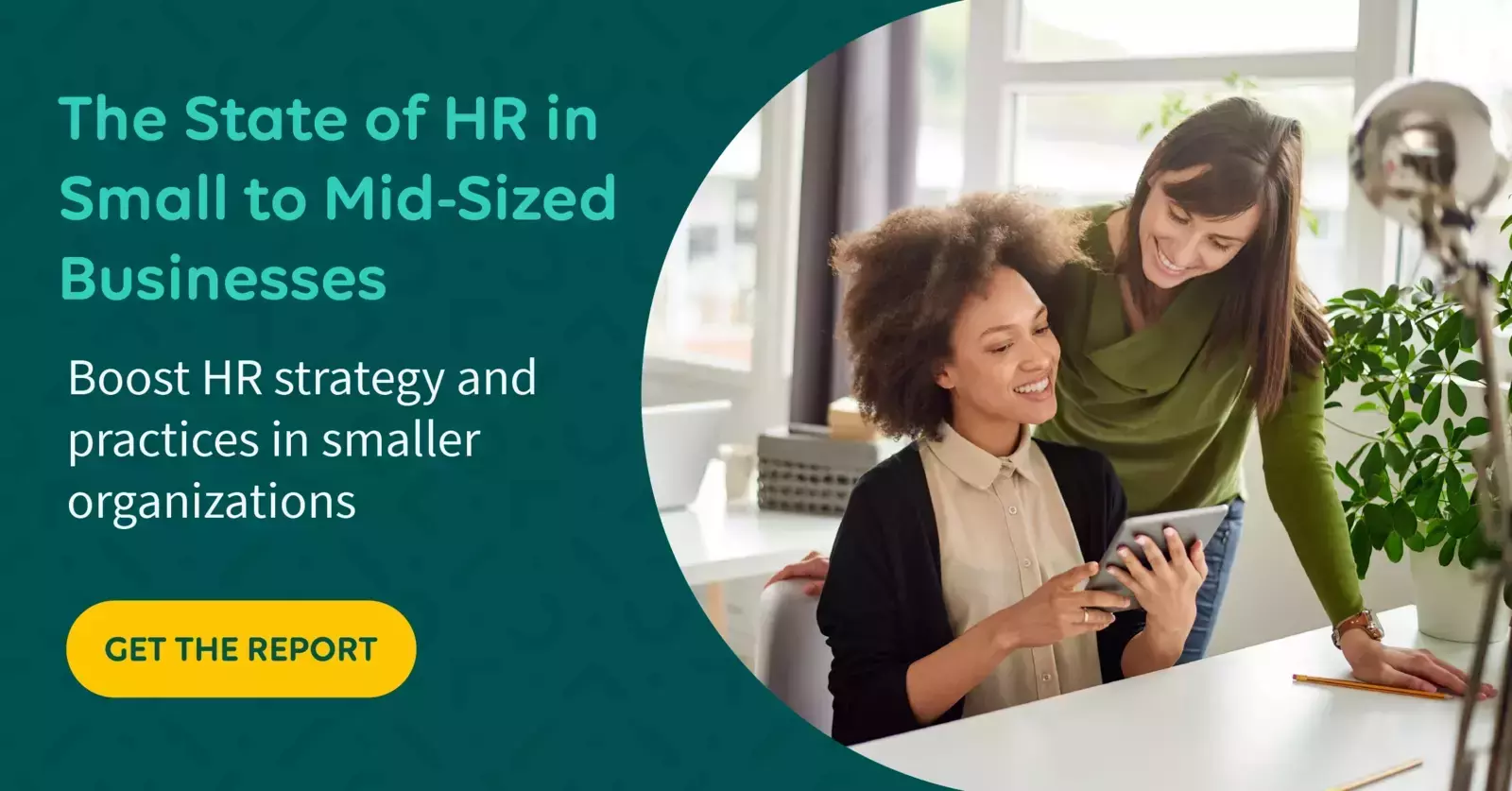We've all heard the latest batch of buzzwords flying around. Things like "talent shortage" and "Great Resignation" seem inescapable in professional HR conversations. But even though the words have changed, they're illustrating something that most people have prioritized for a long time when looking for work — choice.
If people's desire for choice hasn't changed, then what has? Well, when you boil it down, it's really the focus and intensity of that desire that's shifted for employees, which means employers need to adjust accordingly to attract, retain, and engage the best talent. And of course that means HR has to adjust too and help their organization to embrace choice in ways they haven't before, especially at small to mid-sized businesses (SMBs).

What choice means now
To stay competitive, we need to first recognize how the meaning of choice has changed for people. That starts by forgetting another definition that's been floating around in the back of many HR teams' heads for a long time — employee experience.
I know, this is the part where you stop reading for a second and think "did he really just say that? That sounds kind of crazy," but hear me out. I'm not saying we should stop designing work to match the needs, interests, and goals of the workforce. What I am saying is we need to think bigger than that.
One thing that's become clear over the past couple years is that there are no longer nice, clean transitions between people's personal and professional lives. The choices employees have made during the Great Resignation illustrate that they're focused on more than just how an employer interacts with and supports them when they're on the clock. Instead, they're looking at how their job affects their whole life-work journey — all the experiences that matter to them instead of just the employee experience.
But what does that really mean from an HR perspective? We'll explore these topics more in the rest of this article, but at the highest level there are three practical areas to focus on to make it clear to your prospective and existing employees that you're committed to providing as much choice as possible for them in life and work:
- Foster transparency, trust, and personal investment in organizational goals
- Allow people the space to adjust their work experience to fit their lives instead of the other way around
- Set standards that promote and prove your commitment to diversity, equity, inclusion, and belonging (DEI&B)
Let’s take a look at how we start getting there.
Becoming flexible, personal, and transparent
This one might sound a little broad, but it’s actually an area where you can take a lot of practical steps to get powerful results. The key goals here are really providing your people with timely communications in places they actually look to keep them informed, giving them opportunities to provide regular feedback to both improve your processes and help them feel a part of what goes on at the organization, and letting them access the kinds of information they need when and where they need it. The good news is there’s only one key ingredient needed to accomplish all of this — modern HR technology.
Now I recognize that that probably just elicited an “oh here comes the sales pitch” from some of you, but HR technology really is the answer here. Think about it — even with a smaller population of employees, sending one-off emails, answering HR and payroll questions, and gathering feedback through conversation, managers, or even paper forms creates a lot of hassle for you and feels complicated and chaotic to your people. All that changes when you can:
- Schedule communications on policy changes, requirements, or other important updates to go out to everyone who needs to see them regardless of the device they use
- Introduce regular surveys to measure employee satisfaction and evaluate how effective your HR initiatives are
- Give your people the power to connect with your HR systems anytime, anywhere so they can access relevant information like pay statements, performance goals, and HR forms or requests
Here’s what it boils down to. The facts are that over half of those looking for jobs right now say flexibility is a top consideration when they’re considering a job offer. On top of that, 74 percent of workers prefer to be a part of a company they feel they can trust. All the areas we just talked about help ensure your organization aligns with those desires and becomes an employer of choice because of it.
Adapting to the pace of life
When you look at your operations through the lens of choice, you suddenly start seeing opportunities to go beyond just tracking time and schedules. Sure, we need to do these activities to stay compliant and make sure we’re protecting the bottom line, but is there any reason why we can’t bring a little of HR’s people focus in here too?
Time and scheduling are not only places you can introduce more of the flexibility and transparency from the first point, but also access a treasure trove of data that helps you understand employee needs at the same time. With the right tools, you can let your people adjust their schedules through self-service when they need to adapt to events occurring in their lives. Not only that, you can automatically empower your managers with information on workforce activity that indicates if someone on their team might be a flight risk or have fatigue from too many hours, just to name a couple examples. That helps you and your managers have proactive conversations that support your people and your retention goals.
Building belonging
We’ve talked before on this blog about how it’s no longer an option for SMBs to not focus deeply on their culture. A big part of doing that is ensuring you’re building an atmosphere where your people feel confident bringing their whole selves to work. Taking some practical steps to clarify your DEI&B initiatives and ensure that employees see the impact of the steps you’re taking goes a long way here.
There are a lot of facets to this depending on where your company is, who your employees are, and what kinds of cultural standards you already have in place, but some general areas where the HR technology we’ve been discussing can help are the following:
- Paying people not just in a timely fashion, but fairly for the role they hold in your organization
- Setting clear career paths and performance goals so everyone sees a path forward and knows how they can get there
- Getting automatic guidance on how you compare against benchmarks in key areas relevant to your industry and company size
And again, all that stuff we talked about around personalized communication, feedback, and flexibility? That will all help here too. Your people will feel a greater sense of belonging when they trust the information you give them, feel you trust them to do their jobs well, and (to bring back our core theme right at the end) feel they have the flexibility of choice needed to connect their lives and their work no matter what that looks like.
Conclusion: It's time for HR to compete in an era of choice
We’ve only just scratched the surface of the many ways embracing choice can positively impact your people and your business here. There are so many critical moments across each person’s life-work journey to explore, and doing that will help your HR team take steps to ensure your organization thrives through all the changes happening with work. If you’d like to learn more, we’ve got an ebook that can help.



